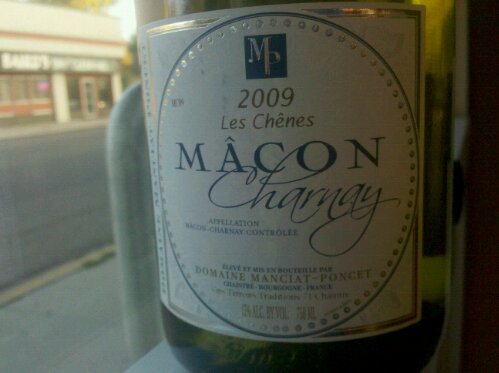This is a subject that’s eaten at me for some time; why don’t the wines of Burgundy get the level of critical acclaim that their price, following, and reputation seem to indicate they should? Before I get into this, my disdain for the 100-point system is well-documented, and I make no qualms about it. I still maintain that the application of ostensibly objective numerical assessment to something that is inherently mutable and subjective is, to say the least, a flawed system. But even taking that into account, I struggle to understand why the wines of Burgundy specifically, and more broadly Pinot Noir wines in general, don’t score as highly as those of the Rhône, Bordeaux, or numerous other regions in the new world. Just to illustrate this point, I did a little search on the Wine Advocate’s website. I admit, searching just one wine publication’s website isn’t absolutely the most scientific. I decided to use the 2005 vintage as my sample, as it was a pretty good vintage for quite a few places worldwide, including Burgundy, Bordeaux, and the Rhône, and it’s a vintage that’s far enough past that anything that is going to be reviewed should be published by now. I searched for wines scoring 96-100 points. This point range is defined by the magazine as “An extraordinary wine of profound and complex character displaying all the attributes expected of a classic wine of its variety. Wines of this caliber are worth a special effort to find, purchase, and consume.”
Here’s what I found:
369 wines met the applied criteria. 45 of these were Pinot Noir (40 from Burgundy, 5 from California.)
39 were from Bordeaux, 30 from the Rhône (6 white), 63 from Australia (50 Shiraz, 1 Grenache, 3 Shiraz-dominant blends, 7 Cabernet, and two whites, a Chardonnay and a Semillon), 96 were American, including the 5 California Pinot Noirs already mentioned, as well as 27 Cabernets, and 21 proprietary blends, most of which are Bordeaux variety blends. Spain gets 43, and Italy only 7, which raises a similar question about the critical treatment of Nebbiolo, but I’ll have to get to that later. There are 29 from Germany, 1 from Chile, 7 from Argentina, 4 from Austria, and a remaining 18 miscellaneous.
This means that, in a vintage that is supposed to be one of the greatest Burgundy vintages of the last century, approximately twice as many wines comprised of Cabernet or Bordeaux variety blends scored in the top point range.
To look at it another way, I looked at just 100-point wines. 31 Cabernets earned the top honor, 26 of these scores from Parker himself, 3 from Jay Miller, and 2 from Pierre Rovani. Compare this to 6. Yes, six Pinot Noirs. All from Burgundy, 5 scored by Parker and 1 by Rovani.
So what does this mean? It could have something to do with the amount of vineyard land dedicated to each of these varieties; Cabernet and Merlot are the two most widely planted varieties of red Vitis Vinifera in the world, so maybe we’re just dealing with the result of scale, right? But the plantings of Tempranillo and Grenache worldwide are roughly equivalent, and we see far more Grenache taking home top prizes than we do Tempranillo.
Well, it could mean that Robert Parker just doesn’t like Pinot Noir that much. That was certainly the conclusion I came to when tasting a Pinot Noir he had rated 97 points, which I thought one of the worst examples of the grape I’ve ever had. But it can’t be as simple as that, can it? A similar search on Wine Spectator’s website turned up results a bit less dramatic, but still telling, with only 2 Cabernets ever given 100 points, and exactly zero Pinot Noirs. So, again, we could just be dealing with writers who don’t like Pinot Noir that much, right? So let’s talk about one who clearly does; Allen Meadows, of Burghound. Mr. Meadows has dedicated his entire career to Burgundy, both red and white, and to a lesser extent Burgundian varietals cultivated in other parts of the world. However, Meadows’ reviews are famously low in the score department. Not that I’m asking him to change that, we’ve already been over how I feel about this whole numbers thing anyway. My question really has more to do with why. Why, when everybody I know in the wine industry agrees that Pinot Noir is one of the greatest grapes in the world, does it not get anywhere near the level of critical acclaim that would seem commensurate with that status?

